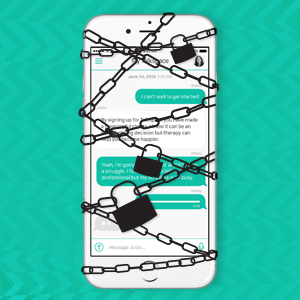Updated on 9/7/2022
Cognitive behavioral therapy (CBT) is a well-documented and successful psychotherapy. It’s one of the more common evidence-based approaches to therapy for multiple scenarios and situations. We’re looking at everything you need to know about this effective option for therapy from what cognitive behavioral therapy is to how CBT techniques are actually used in treatment.
Types of Cognitive Behavioral Therapy
There are many available forms of CBT techniques. The different types of CBT techniques span from self-help books to talk therapy and structured outpatient situations, to inpatient treatment. Most methods of delivery use one of four major cognitive therapy techniques:
Cognitive Behavioral Therapy Online
Start CBT to learn to identify and reframe negative thought patterns and develop positive coping skills
Cognitive Therapy
Cognitive therapy tries to identify and change negative emotions and detrimental thought patterns into positive thoughts. Negative thought patterns are first determined and then addressed alongside the behavioral and emotional responses associated with them. All this is done in an effort to alter automatic negative thoughts to become healthier, more productive patterns.
Dialectical Behavior Therapy (DBT)
CBT and DBT are often confused with one another. This confusion may come from the fact that DBT also uses techniques like mindfulness and emotional regulation to address automatic negative thoughts, psychological distress, behaviors, and painful emotions. Dialectical behavioral therapy focuses intensely on the outcomes of thoughts.
Multimodal Therapy (MMT)
Multimodal therapy attempts to treat mental health conditions by combining several types of therapy. It addresses the different dimensions of a person’s personality including:
- Behavior: Considering the habits, gestures, inappropriate acts and behaviors that person exhibits.
- Affect: Refers to the degree of negative feelings or negative emotions.
- Sensation: Refers to negative physiological sensations or symptoms including pain, sweat, nausea, etc.
- Imagery: Refers to the presence of negative cognitive and mental images.
- Cognition: Refers to the level of negative attitudes, beliefs, and automatic thoughts one experiences.
- Interpersonal relationships: Refers to an individual’s ability to develop and maintain healthy relationships.
- Drug/biological considerations: Looks at a person’s physical health, lifestyle choices, and drug use.
Rational Emotive Behavior Therapy (REBT)
Rational emotional behavior therapy focuses on underlying beliefs. REBT attempts to first identify major beliefs, and then address those beliefs to help change those that have a particularly negative influence.
While different in their tactics, each CBT strategy addresses thoughts and behaviors that can generate psychological distress.
What Are the Different Techniques of CBT?
Each CBT strategy described above can be practiced through a variety of methods.
- Activity Scheduling/Behavior Activation: Activity scheduling and behavior activation is a simple CBT technique. It specifies a time to do stressful activities that might otherwise be avoided due to anxiety or fear. Activities can be written on a calendar, or habits can be developed to encourage doing certain things at specific times.
- Behavioral Experiments: Behavioral experiments can be a useful CBT technique in instances when a catastrophic consequence is feared. First, a prediction is made about what terrible event might occur. Then, the likelihood of it becoming a reality is discussed. Finally, whether or not the consequence ever comes to fruition is explored.
- Cognitive Reframing/Restructuring: Cognitive reframing and restructuring examine negative thinking that occurs in specific, identified situations. These thoughts are then reframed into more positive and productive ones.
- Exposure Therapy: Exposure therapy is used to counter fears and phobias. This type of therapy involves a slow exposure to a phobia or whatever is causing the fear. During a therapy session, exposures are then paired with active guidance on how to manage the stress or anxiety brought on. Typically, sessions will start small and build up, similar to behavioral experiments.
- Guided Discovery: Guided discovery is always done with a therapist (as opposed to some other techniques that can be taught in a self-help book). A CBT therapist aligns with a specific viewpoint and then challenges that viewpoint from within its framework. For example — during a guided discovery session, a therapist might ask about evidence that supports or doesn’t support a certain viewpoint.
- Journaling/Thought Recording: Journaling and thought recording use the time-honored technique of simply putting pen to paper. Often, it involves recording automatic negative thoughts and positive alternatives. Sometimes this cognitive therapy technique is used to record new ideas or reactions from a recent therapy session to see if and how they can result in different behavior. Journaling can be especially helpful in maintaining progress between sessions.
- Relaxation and Stress Reduction: Relaxation and stress reduction uses physical methods to lower stress and anxiety. Methods can include deep breathing exercises, muscle relaxation, and meditation. There are broad applications for this cognitive behavioral technique, and it’s frequently paired with other techniques.
- Role Playing: Role playing is similar to behavioral experiments in that both cognitive behavioral techniques address specific situations. But there are significant differences between the two tactics. Role playing embodies situations by taking on different characters. It’s used to develop skills and refine reactions. The technique can be effective in helping increase assertiveness, confidence, communication, and social skills. This is one example where CBT can be used to further improve strengths, as opposed to addressing a specific condition, negative trait, or fear.
- Successive Approximation: Successive approximation teaches someone how to break overwhelming tasks into smaller, more manageable steps. Confidence generally increases as progress is made with each step, making this one of several promising cognitive therapy techniques for those who tend to feel anxiety or overwhelmed in specific situations.
“Many of the techniques in CBT can be combined with other therapy techniques and they are easy to learn. Once CBT techniques are learned they can help individuals replace unhealthy behaviors with more positive strategies for dealing with daily stressors. CBT can give people hope about their condition and help boost self-esteem. Additionally, techniques such as role playing, relaxation and journaling can have huge benefits to overall mental health.”
Talkspace therapist Reshawna Chapple, PhD, LCSW
During the first few CBT sessions, the primary goal will be to help a therapist fully understand what you’re dealing with and what your goals are for therapy. Together, you and the therapist will create a plan of action designed to help you reach your goals. Therapy can include individual work, family sessions, or even group therapy.
What Are the Benefits of Cognitive Behavioral Therapy?
Cognitive behavioral techniques and therapy aren’t an overnight solution, but progress can often be made in anywhere from 5 to 20 sessions. Compared to other psychotherapeutic treatments, cognitive behavior therapy has a number of benefits, including:
- Cost: Cognitive behavioral therapy techniques can be more affordable than some other treatment options. Especially if they can be sought out through outpatient methods (for example, through self-help books and regular therapeutic sessions).
- Proven Results: As noted earlier, cognitive behavioral therapy techniques are highly researched and proven to be effective. They’re one of the most well-documented psychotherapeutic techniques, and have shown to be extremely effective for many mental health conditions. For example, CBT for PTSD, or Post Traumatic Stress Disorder, can be extremely effective for many.
- Flexibility: The multiple cognitive behavioral therapy strategies and CBT techniques available make for a large array of possible applications. Treatment can be found in books, inpatient treatment, and/or regular therapy sessions. All of this makes CBT a great option for a variety of personal situations and comfort levels. In-person and online options serve to further increase flexibility.
- Non-Drug: CBT itself is a non-medicated approach, and it can be completed without the use of any medication or drugs. That said, it can be paired with medication when and if appropriate and under the supervision of a healthcare provider.
- Solutions: The various strategies and techniques available make CBT an effective option for many conditions and therapy needs. People with serious mental health conditions can benefit from this type of treatment.
“CBT as a therapy practice is easy to learn, easy to combine with other therapeutic interventions such as solution focused therapy and easy to incorporate in your daily routine. I have been told by clients that CBT builds confidence because they can see the changes happening in their life and it helps them feel more in control of their mental health journey.”
Talkspace therapist Reshawna Chapple, PhD, LCSW
How to Get Started with CBT
Getting started with one of the CBT techniques we’ve discussed here is simple. If you or a loved one has experienced negative feelings, phobia, abuse, or depression, the first step is to talk to your healthcare provider. The first step is talking to your healthcare provider. You may want to reach out to your insurance company to see what type of coverage you have. Your primary doctor can refer you to a licensed therapist who offers CBT therapy, and your insurance company can explain the coverage you have and what your cost should be to seek treatment. Once you have this information, you’ll be able to find a CBT solution that works the best for your needs and goals.
Cited Sources:
- Introduction to CBT. Beck Institute. https://beckinstitute.org/about/intro-to-cbt/. Published 2021. Accessed August 15, 2021.
- Cognitive Behavioral Therapy. LifeStance Health. https://www.mygbhp.com/services/cognitive-behavioral-therapy/. Published 2021. Accessed August 15, 2021.
- Rnic K, Dozois DJA, Martin RA. Cognitive distortions, humor styles, and depression. Europe’s Journal of Psychology. 2016;12(3):348-362. doi:10.5964/ejop.v12i3.1118.
- Lazarus AA, Abramovitz A. A multimodal behavioral approach to performance anxiety. Journal of Clinical Psychology. 2004;60(8):831-840. doi:10.1002/jclp.20041.
- Lincoln T, Riehle M, Pillny M et al. Using Functional Analysis as a Framework to Guide Individualized Treatment for Negative Symptoms.
- Kumar V, Sattar Y, Bseiso A, Khan S, Rutkofsky IH. The Effectiveness of Internet-Based Cognitive Behavioral Therapy in Treatment of Psychiatric Disorders. Cureus. Published August 29, 2017. https://www.cureus.com/articles/8283-the-effectiveness-of-internet-based-cognitive-behavioral-therapy-in-treatment-of-psychiatric-disorders. Accessed August 15, 2021.
Talkspace articles are written by experienced mental health-wellness contributors; they are grounded in scientific research and evidence-based practices. Articles are extensively reviewed by our team of clinical experts (therapists and psychiatrists of various specialties) to ensure content is accurate and on par with current industry standards.
Our goal at Talkspace is to provide the most up-to-date, valuable, and objective information on mental health-related topics in order to help readers make informed decisions.
Articles contain trusted third-party sources that are either directly linked to in the text or listed at the bottom to take readers directly to the source.




